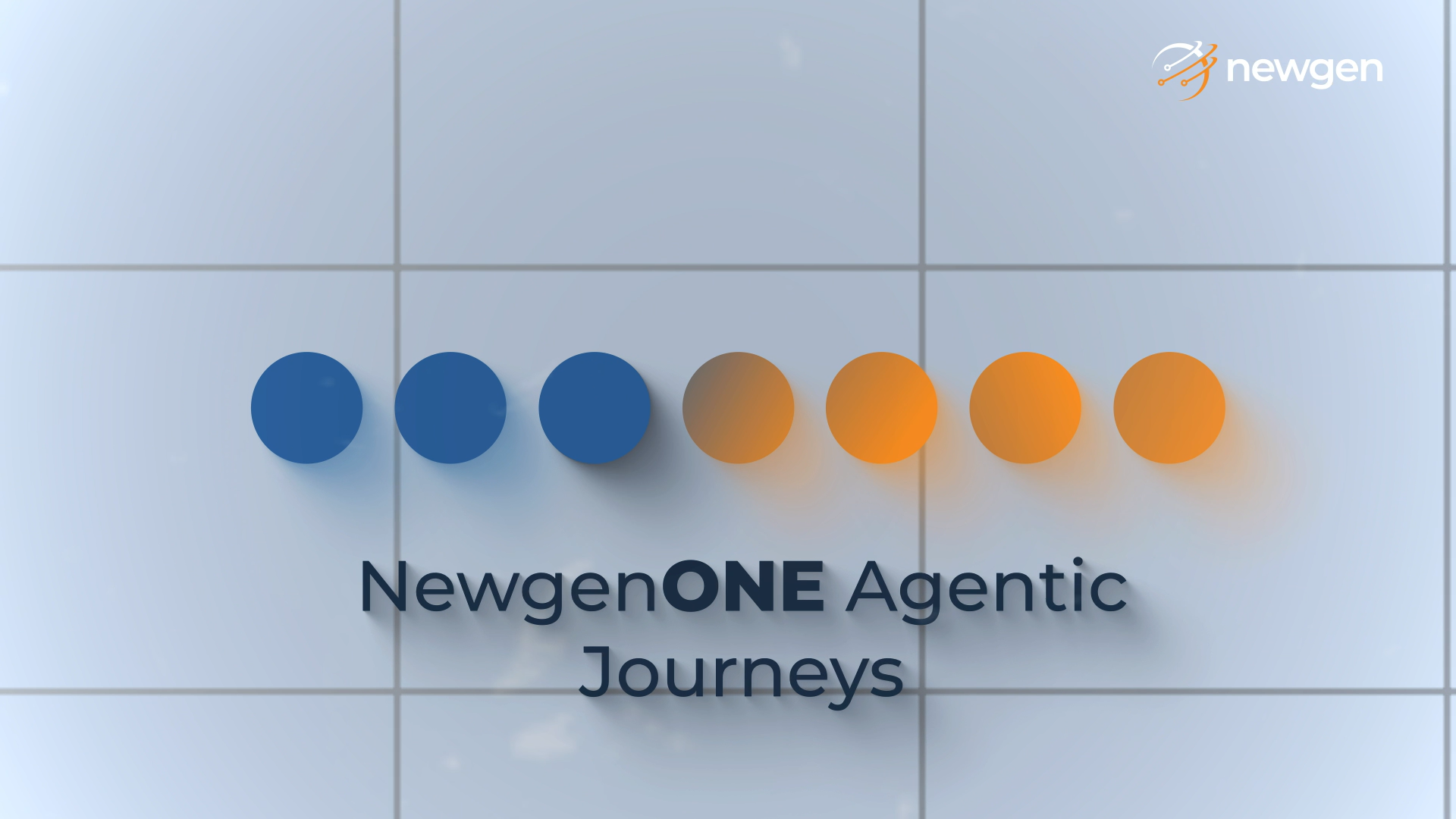In insurance, the journey is as critical as the product itself. Every interaction from underwriting to claims to servicing shapes the customer’s perception of value. Yet, many insurers still operate on fragmented, manual workflows that slow down processes, create inconsistencies, and miss opportunities to enhance experience. Agentic AI is changing that equation by enabling seamless orchestration of the entire insurance lifecycle, ensuring nothing is missed and every moment counts.
The Shift from Discrete Automation to Agentic Orchestration
Traditional automation in insurance focused on isolated tasks such as data entry or document processing. Agentic AI moves beyond this, operating as a network of intelligent agents that can assist, decide, act, and learn continuously within defined environments like underwriting, claims management, or policy servicing. These agents collaborate with other AI capabilities, chain complex processes together, and retain context over time.
This evolution transforms AI from a passive analytical tool into an active orchestrator. For example, in underwriting, an AI agent can cleanse application data, run compliance checks, evaluate risk, price the policy, and prepare binding documents without requiring multiple manual handoffs. In claims, agents can triage incoming cases, detect fraud patterns, and prepare adjuster-ready summaries in real time.
According to Deloitte, over 80 percent of businesses in India plan to adopt agentic AI systems within three years. McKinsey projects that by 2030, over half of claims tasks will be fully automated and policies will be bound in seconds. The industry is shifting from experimenting with AI in silos to embedding it deeply into the core journeys that define both customer experience and operational performance.
Underwriting in the age of Agentic AI
Slow, paperwork-heavy processes and fragmented systems have long hampered underwriting. Agentic AI acts as a digital co-pilot for underwriters, automating repetitive tasks and enriching decisions with real-time intelligence. AI agents can automatically structure and validate incoming submissions, flag missing details, and pre-populate underwriting systems. This reduces decision times from days to minutes while maintaining high accuracy. Industry data shows that insurers using AI-driven underwriting workflows have achieved efficiency gains of around 35 percent, translating into faster quote turnaround and improved conversion rates.
More importantly, AI extends the underwriter’s analytical reach. By processing vast datasets from internal and external sources, it can identify subtle risk factors and optimize pricing strategies. High-risk cases can be flagged early, while low-risk policies can move swiftly to binding, ensuring resources are focused where human judgment delivers the greatest value.
Claims as the “Moment of Truth”
Claims processing is where insurers prove their promise to customers. Delays or errors in this stage can permanently damage trust. Agentic AI improves both speed and quality. For simple, low-value claims, AI agents can execute straight-through processing from first notice of loss (FNOL) to settlement. Capabilities like image recognition allow immediate assessment of damage from photos, while fraud detection modules compare claims data against known risk patterns. A significant amount of these straightforward (STP_ claims could be settled automatically, cutting costs and improving cycle times.
For complex cases, AI augments human adjusters. It can extract relevant facts from lengthy documentation, highlight inconsistencies, suggest next best actions, and provide historical precedent data. This enables faster, more consistent decision-making while allowing adjusters to focus on negotiation, empathy, and customer reassurance. Early detection of patterns such as multiple related claims can also reduce leakage and mitigate larger risks before they escalate.
Policy Servicing with Intelligence and Empathy
Policy servicing handles high volumes of routine customer interactions, from endorsements and renewals to billing queries. Historically, these functions relied on back-office teams working across multiple disconnected systems, leading to delays and service gaps. Conversational AI agents now manage a significant share of these interactions directly. They can retrieve policy details, make simple changes, process service requests, and hand over complex issues to human agents with full context preserved. By integrating with core systems, these agents ensure that updates are executed instantly and accurately.
The result is faster, more consistent service. A BCG 2023 report suggests that AI-augmented service teams have increased productivity by over 30%, enabling staff to focus on higher-value customer engagements. Customers benefit from shorter wait times, proactive notifications, and smoother interactions across channels.
Unifying the Insurance Lifecycle
The greatest value emerges when agentic AI connects the dots across all stages of the customer journey. Instead of operating as isolated tools, AI agents can follow the policyholder from acquisition through servicing to renewal, maintaining context and orchestrating each interaction. For example, during the policy term, AI agents can monitor real-time risk indicators and suggest adjustments to coverage. If a loss occurs, the claims agent initiates FNOL automatically, gathers documentation, and either processes the claim straight-through or provides a complete case file to a human adjuster. At renewal, underwriting and servicing agents collaborate to propose optimal terms or trigger retention efforts.
This continuity eliminates the blind spots that occur when processes are siloed. Every step is faster, more accurate, and more transparent, meeting both customer expectations and regulatory requirements. The orchestration also strengthens operational resilience, as the same AI infrastructure supports multiple journeys and lines of business.
The Low-code Advantage
Low-code platforms accelerate the adoption of agentic AI by enabling insurers to design, deploy, and refine workflows without heavy coding. Gartner in 2021 estimated that by 2025, 70% of new enterprise applications will be built using low-code or no-code tools. For insurers, this means AI agents can be integrated with legacy systems, business rules, and compliance frameworks in weeks rather than years.
This agility is critical as market conditions shift and new risks emerge. Insurers can quickly introduce new AI capabilities, adjust decision models, and expand automation coverage without disrupting existing operations.
Moving from Pilot to Scale
While many insurers have tested AI in contained pilots, the competitive edge comes from scaling across journeys. This requires a clear vision, robust governance, and investment in change management. Teams must be trained to work alongside AI, interpreting insights, managing exceptions, and refining the orchestration.
Early adopters are already seeing results in reduced loss ratios, higher customer satisfaction, and improved profitability. The difference between incremental gains and transformative impact lies in connecting every journey, not just automating isolated tasks.
Insurance 2.0 in the era of Agentic AI
Agentic AI is not simply a tech trend; it is the foundation for building seamless, high-value insurance journeys. By orchestrating underwriting, claims, and servicing into a cohesive flow, insurers can deliver faster responses, better decisions, and a more engaging customer experience. Those who embrace this transformation now will be positioned to lead in an industry where the journey defines the product.
You might be interested in

20 Nov, 2025
Transforming Enterprises with Newgen’s Business Process Management Software



